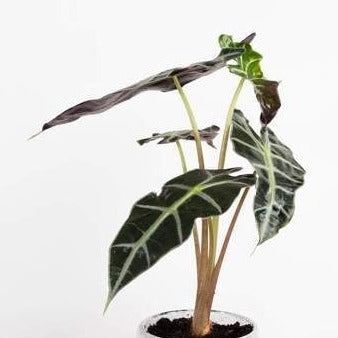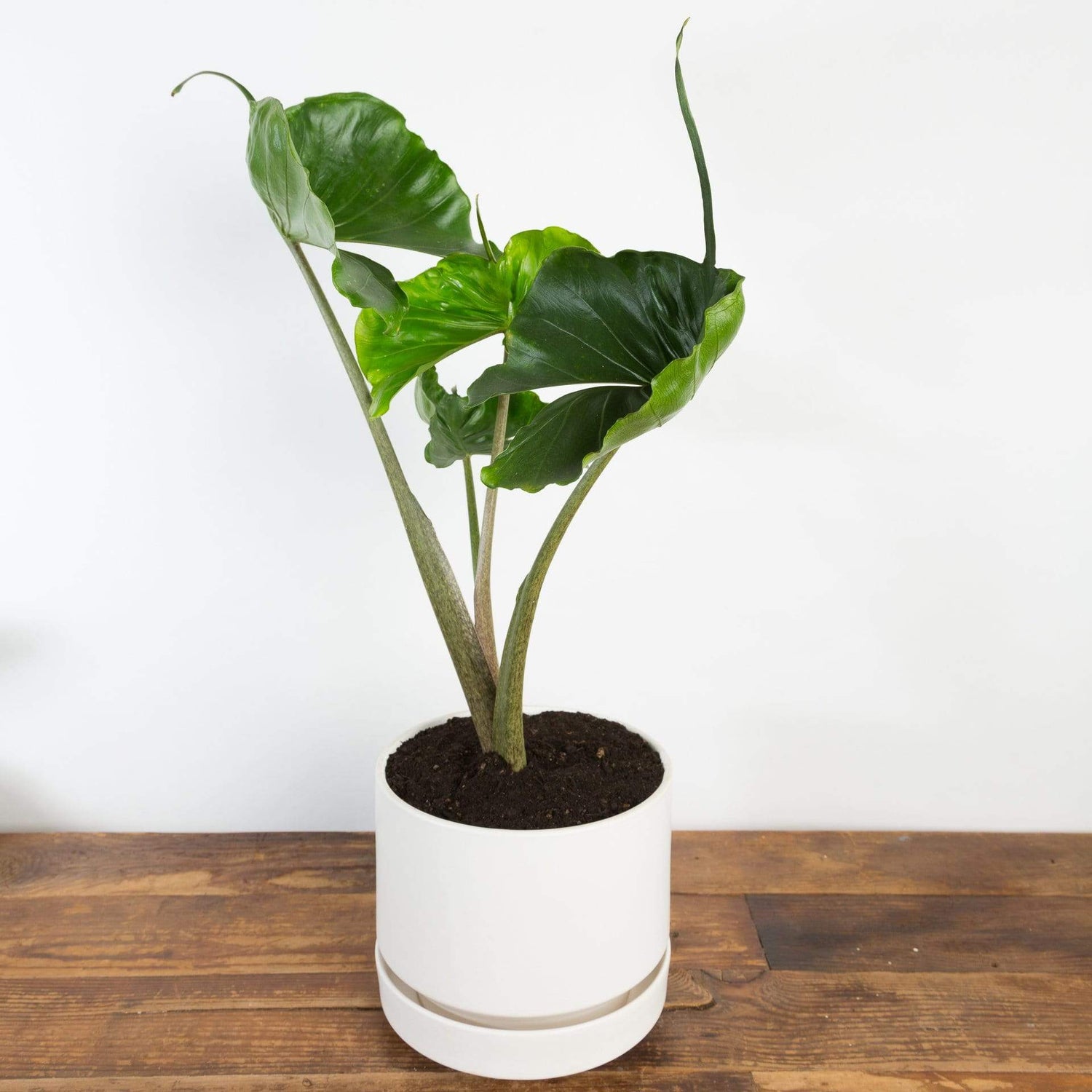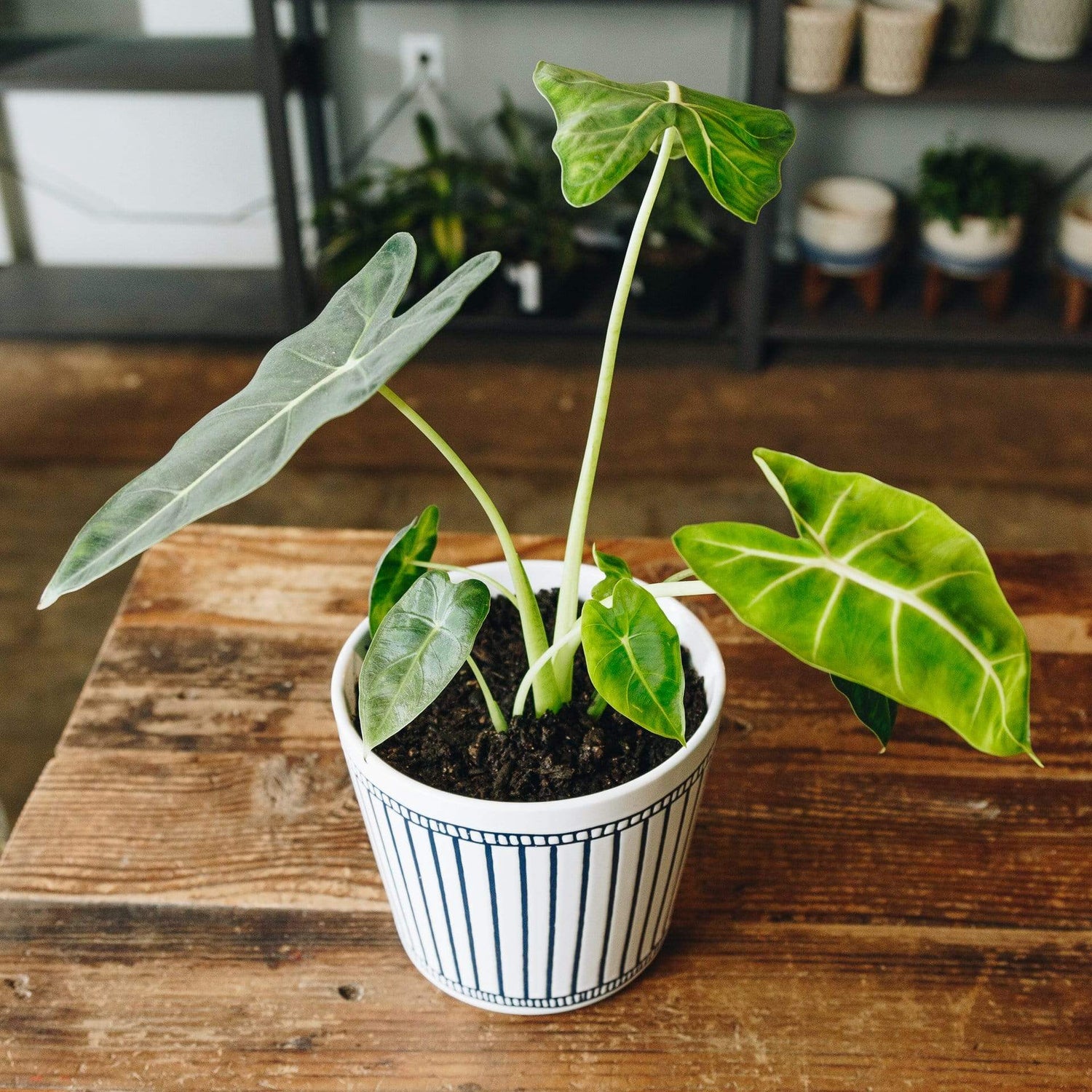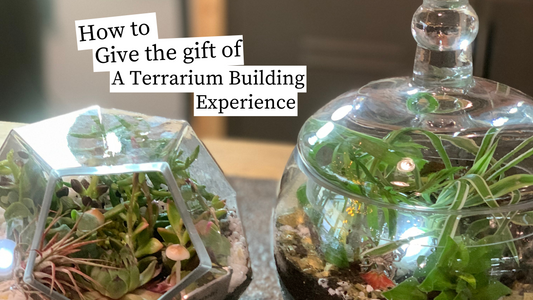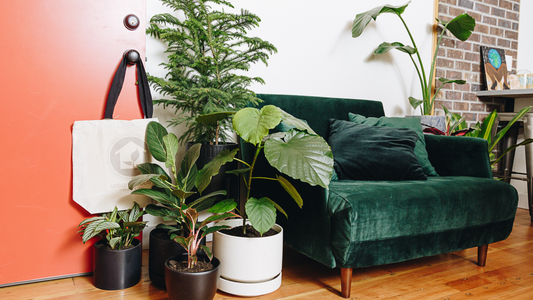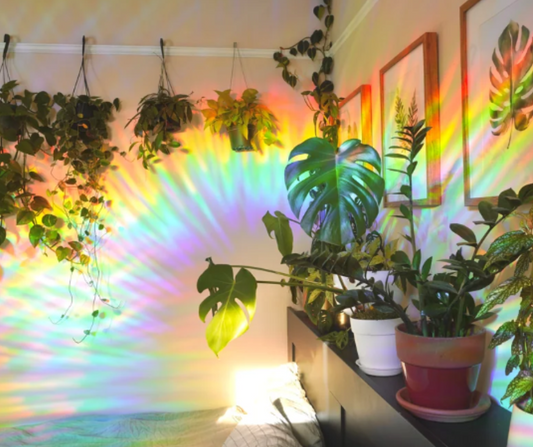
How to Keep Your Alocasia Alluring not Ailing
Alocasia has been winning a place in people’s hearts and homes since the 1950’s. Originating from the tropical and subtropical forests of South East Asia, Alocasia is a member of the Aracea or Arum family. It’s arrow shaped foliage comes in a variety of textures and often features eye-catching veining which contrasts the deeper color of the leaves.
There are around 80 varieties of Alocasia that feature many color variations, textures and sizes. This guide will provide you with a general starting point for Alocaisa care, but it’s important to let your own plant be the authority on it’s needs and routines.
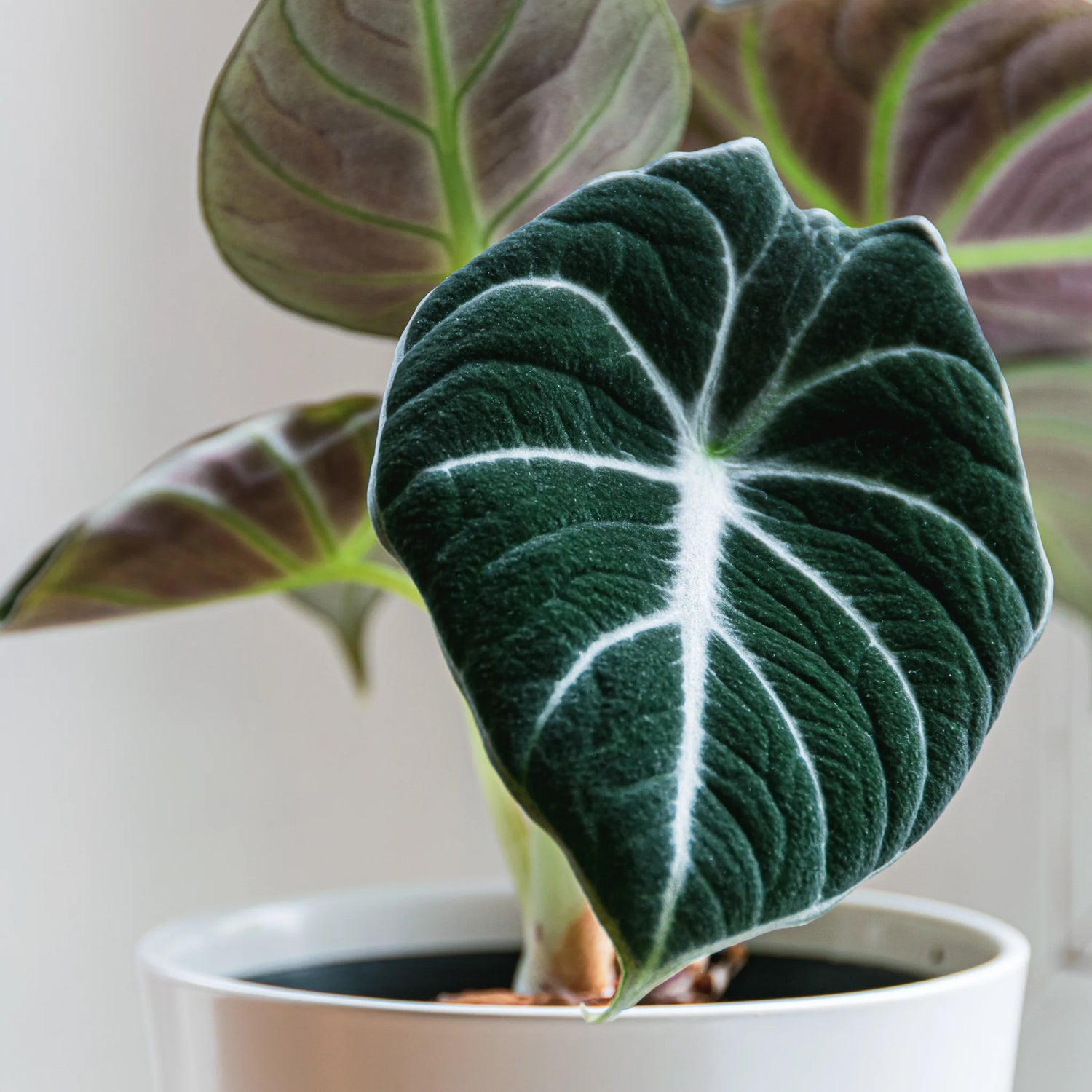
Are Alocasia Hard to Care For?
Whether a houseplant is “easy” or not really depends on your own care style and preferences. While researching this article we saw Alocasia called everything from “low-maintenance” to “extremely fussy”
Alocasia are fairly resilient, which means they can bounce back from a few minor mistakes. If you miss waterings fairly regularly, or you don’t have the right environment in your home, however, you may find it nearly impossible to keep an Alocasia happy.
With a basic understanding of the care and environmental needs of your plant, you can ensure that Alocasia is a home favorite for years to come.
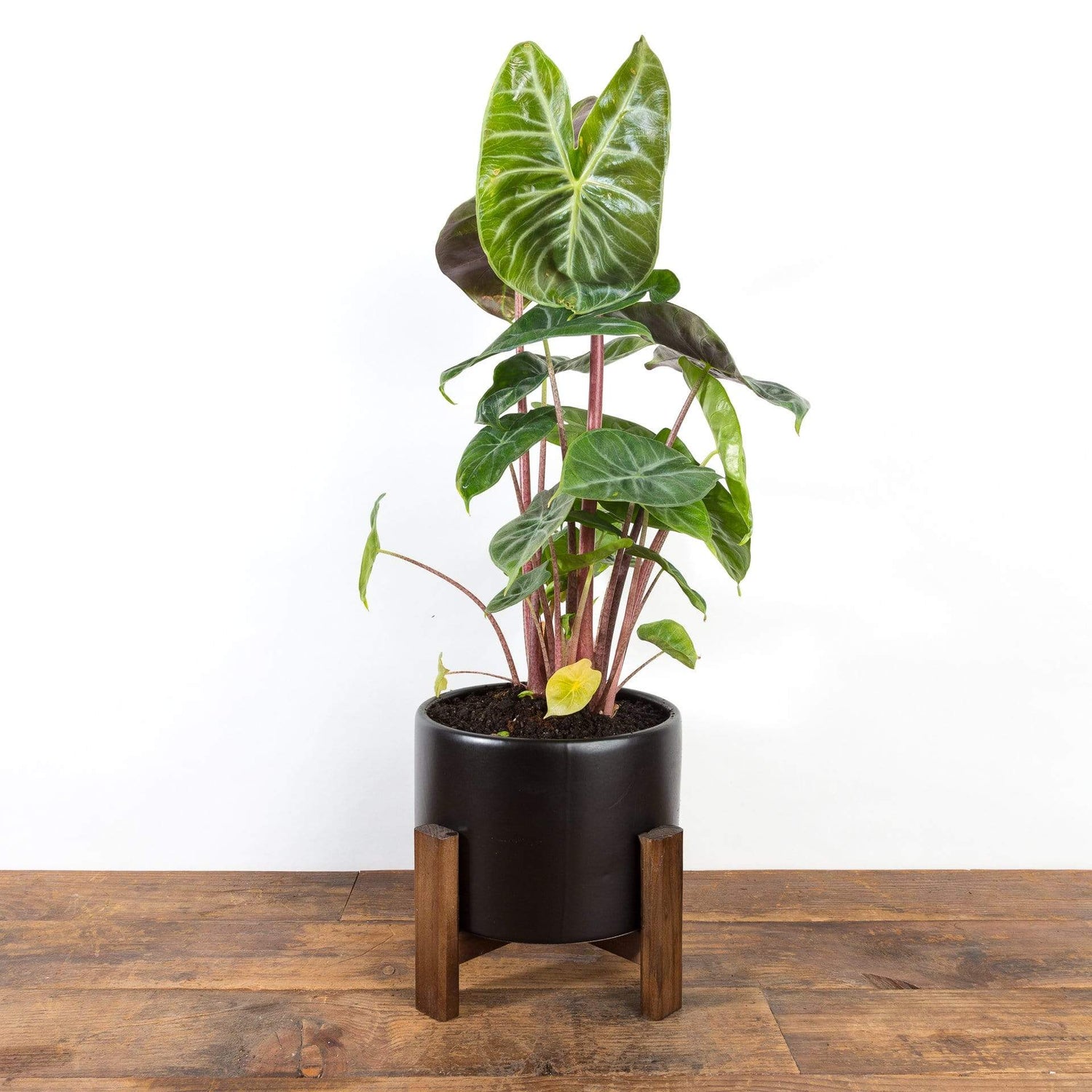
Before you Buy an Alocasia
Alocaisa success starts with ensuring you have a compatible space for your plant to thrive in. If you don’t have the perfect space, it doesn’t mean your Alocasia dreams are dashed. However, you may need to pick up some supplemental equipment along with your new plant.
Alocaisa need bright indirect light, which is bright light that doesn’t cast a harsh shadow. It can be found naturally in front of an East facing window. You can also use a sheer curtain to diffuse light in front of a South or West facing window, or place your plant further into the room. If you’ve got a North facing window you will need to invest in a grow light.
Another thing to consider before you bring home an Alocasia is temperature and humidity. Alocasia do not do well with cold or hot drafts, so make sure the location you have in mind isn’t directly in front of an air conditioning or heat vents or near an outside door.
You will also want to ensure your alocasia can enjoy year- round humidity. A pebble tray, humidifier, or micro mister can ensure your plant receives the humidity that it requires to flourish.
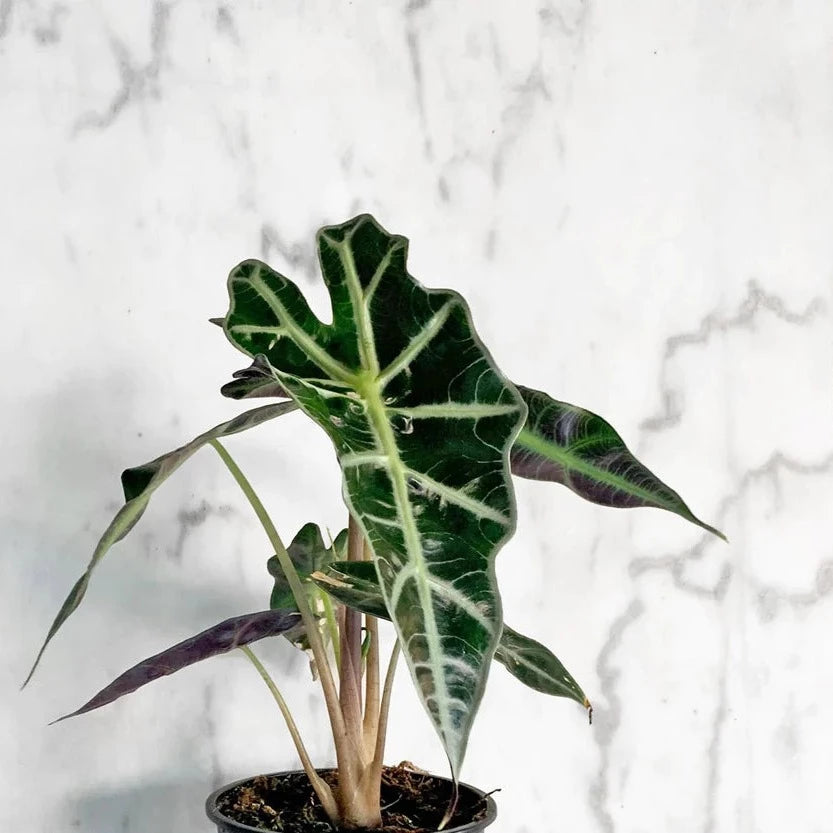
How to Water an Alocasia
Because Alocasia need humidity, you might assume they need a lot of water as well. However, Alocasia’s tuberous roots are vulnerable to rot if they are watered too frequently. It’s best to let your plant dry ½ way to ¾ of the way out in between watering.
To check the moisture of your soil, insert a wooden chopstick into the pot and measure how much soil sticks to the chopstick when you pull it up. You can tell it’s time to water when only the bottom half to bottom third of your chopstick has soil sticking to it.
Alocasia can be sensitive to certain additives in tap water as well. Leaving your filled watering can out over night allows additives to evaporate from tap water so it’s safe to use. You can also run your tap water through a filter before you use it.
(Shown: Alocasia 'Polly')
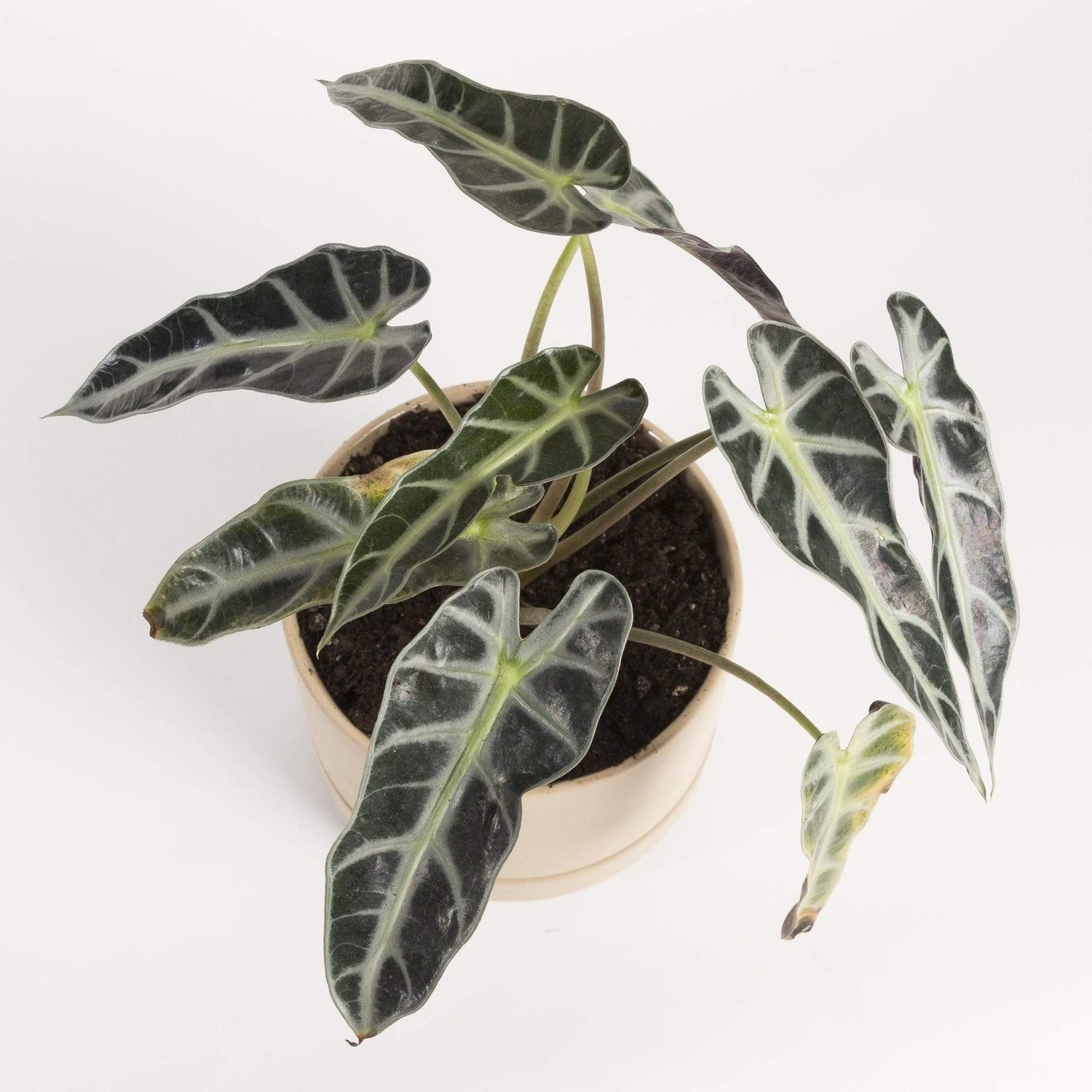
Common signs your Alocasia has been under watered
Keep an eye out for any crispiness in your leaves or leaf yellowing or curling especially if it’s accompanied by dry soil. This is often an indication that your plant isn’t receiving enough water. Water your plant thoroughly and make sure the water is being absorbed evenly.
Common signs your Alocasia has been over watered
If your Alocasia leaves start drooping and losing some of their shape or you notice water droplets forming on the tips of the leaves it’s an early sign your Alocasia has been over watered. If you catch it early you can simply make sure your plant dries out to it’s desired level before you water again.
More severe signs of overwatering are fungus appearing on the soil, any mushiness of the stem or mushy spots appearing on the leaves, or foul smelling potting mix.
If any of these signs occur it’s best to re-pot your plant intro dry soil immediately, cutting away any signs of rot and letting your plant dry thoroughly before watering it again.
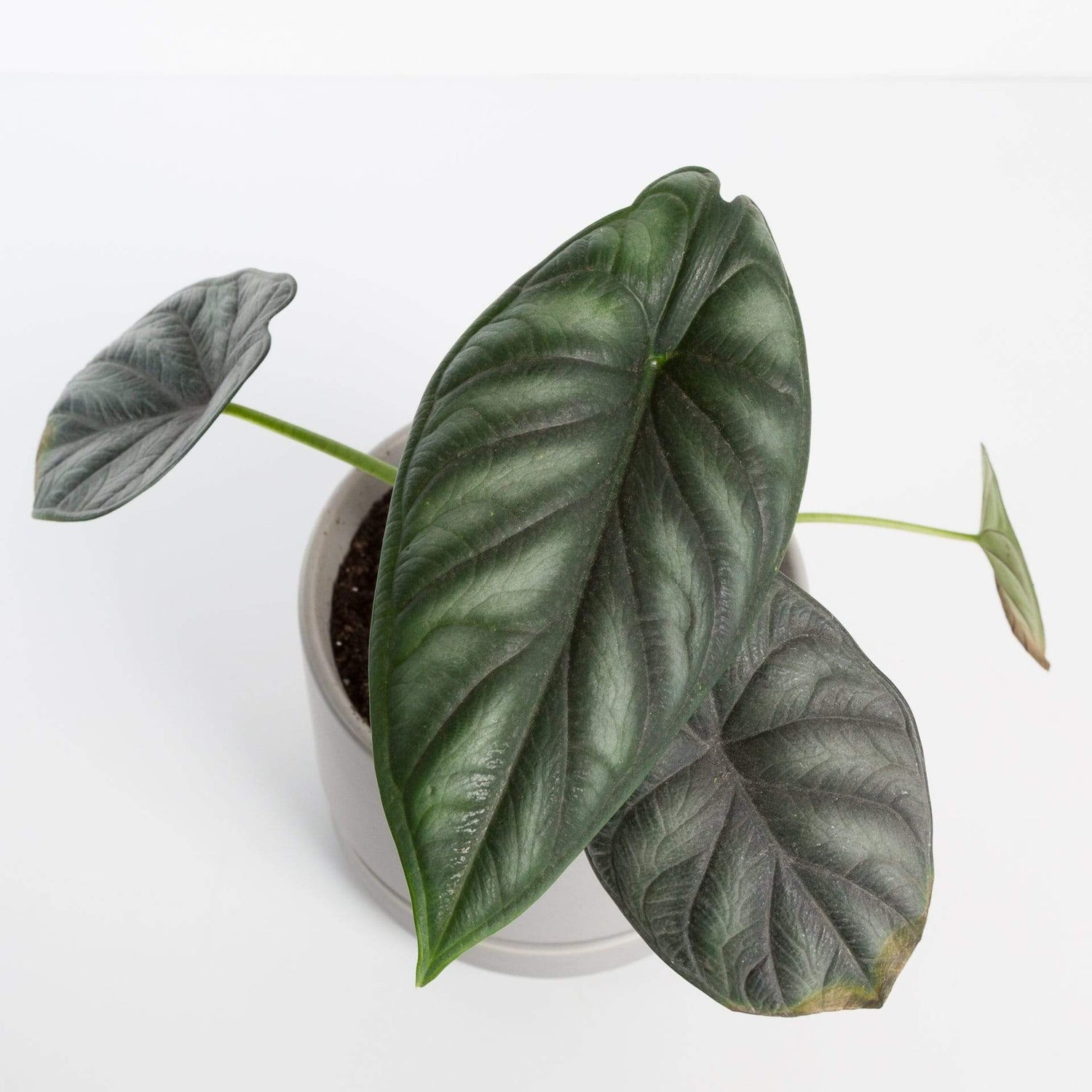
Do Alocasia need sunlight?
Alocasia developed their broad leaves to maximize their ability to absorb sunlight from the rainforest floor. They require Bright, indirect light - that is light that is bright enough to read by and casts a kind of hazy undefined shadow rather than a harsh shadow.
Because Alocasia turn their leaves towards the sun, they can be prone to tilting. Turning the plant a little each time you water it helps ensure that your plant maintains even growth.
While your Alocasia does need some sun light, a grow light bulb in a lamp can be used to supplement some of your Alocasia’s light needs. Even though grow lights aren't as intense as the sun, a rapid change in light (like suddenly adding or removing a grow light) may cause un-due stress to your plant. We recommend making any environmental changes gradually to allow your plant to adapt to them.
If you do use a grow light, make sure that your plant is 12 to 30 inches from the bulb to avoid scorching the leaves.
(Shown: Alocasia 'Silver Dragon')
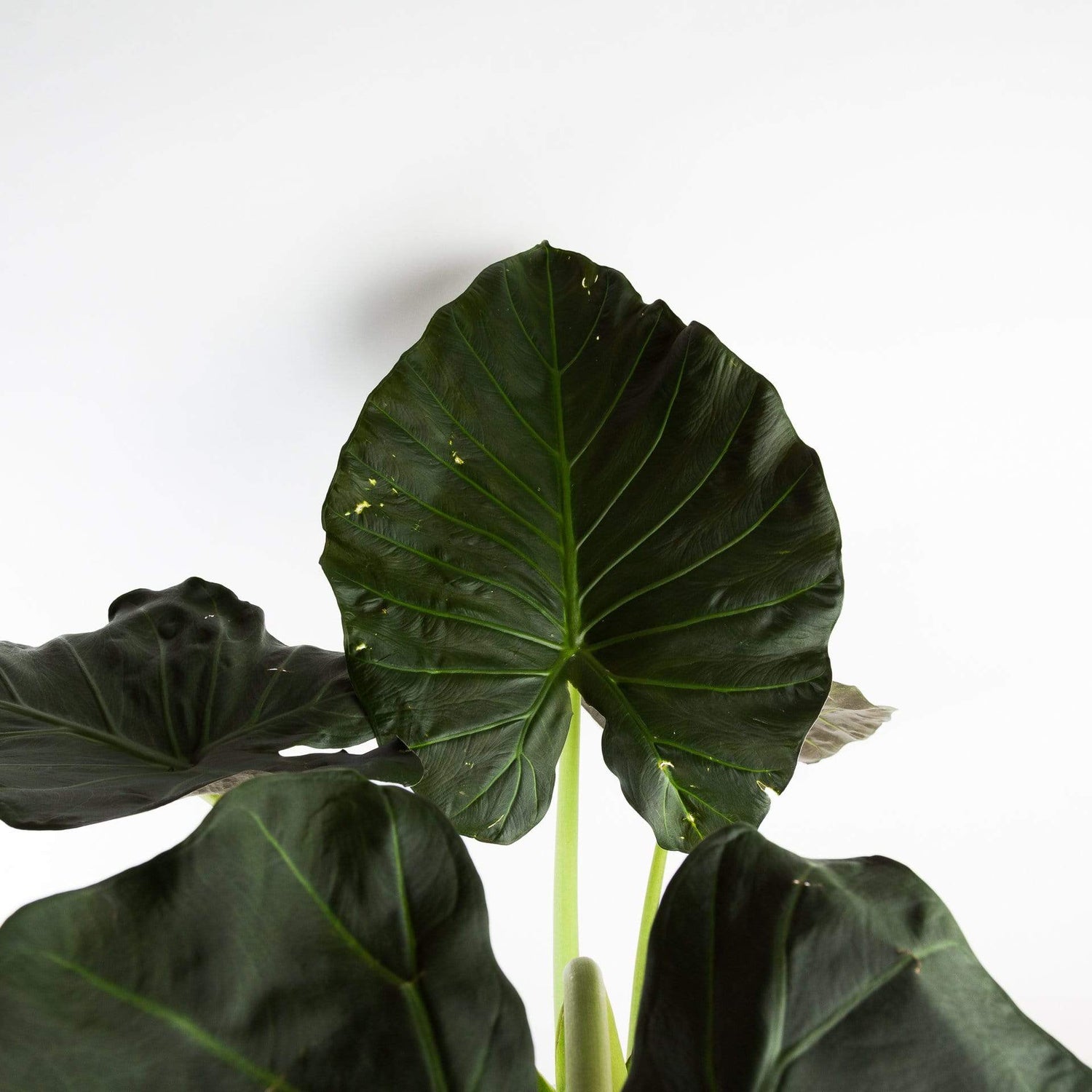
Common signs your Alocasia is getting too much light
If your leaves are starting to look bleached or scorched (and you're watering whenever your soil reaches it’s desired dry out) you are likely looking at light damage.
Seasonal changes can impact the intensity of light your plant is receiving. A placement that works well for your Alocasia in the Fall may receive too much direct light in the Summer.
Add a sheer curtain to help diffuse light or move your plant farther in to the room where it won’t recieve direct sun.
Common signs your Alocasia isn't getting enough light
If your plant has long thin stems, small leaves and slow growth it is likely not getting enough light. It will need to be placed closer to a window or may need light from a grow light.
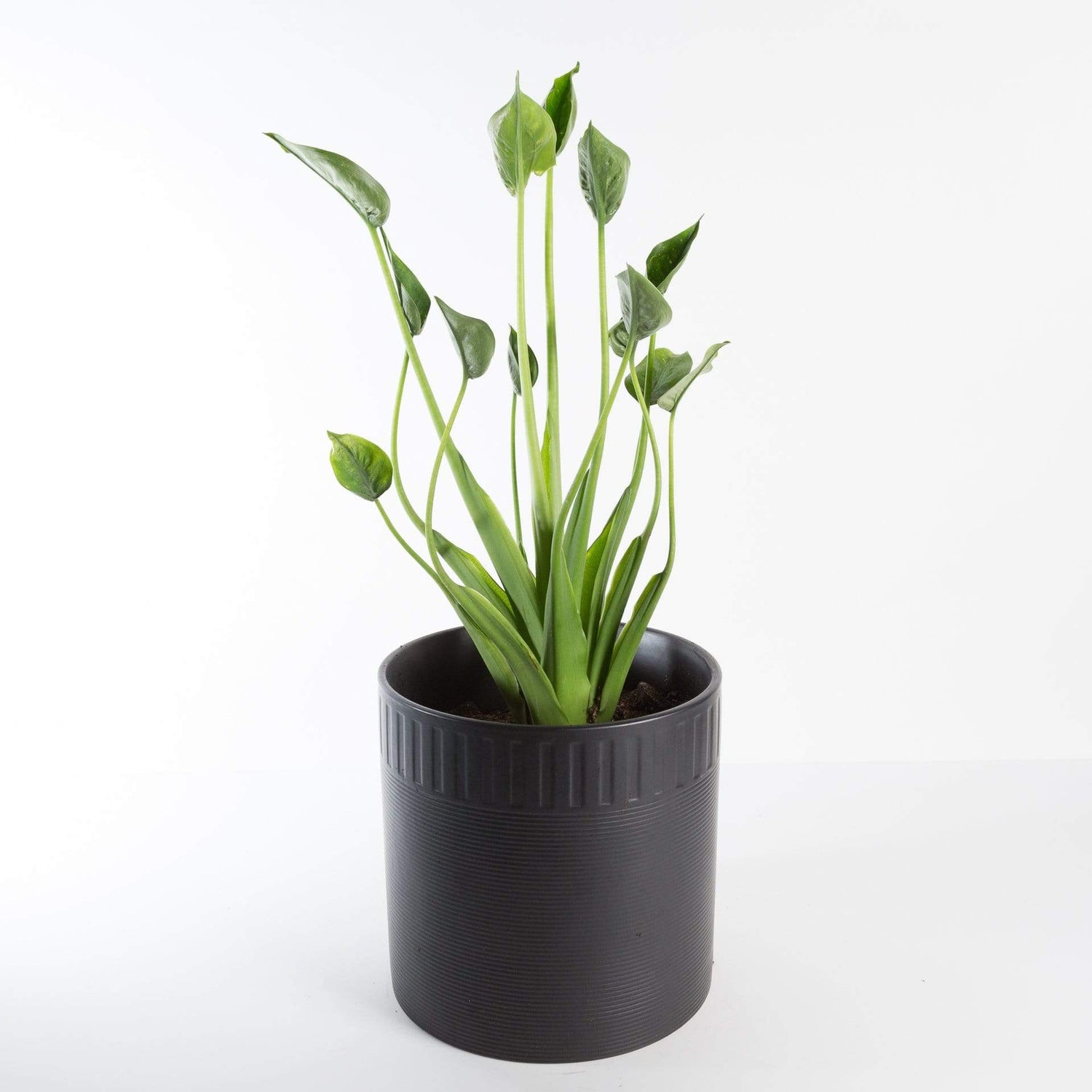
Alocasia & Spider Mites
We wont be going into the details of EVERY pest and ailment that you might encounter in this blog, but no Alocasia care guide would be complete without talking about spidermites.
Alocasia have a reputation as spider mite magnets. Be on the lookout for any white spots on your leaves and webbing on the stems and leaves.
Maintaining consistently warm temperatures with humidity is not only ideal for your plant but it will help deter spider mites which prefer dry conditions. Wiping your leaves quarterly with neem oil or leaf polish can also help prevent spider mites and other pests.
If you find yourself with spidermites the first step is to isolate your plant from any uninfected plants (You may want to treat nearby plants to help prevent spread). If you caught the signs of spider mites early you may be able to clear them up by wiping them away with a wet cloth or washing them away with a shower and increasing the humidity around your plant.
For a more extreme infestation we recommend bringing your plant into our clinic or scheduling a digital diagnostic with one of our clinicians for personalized guidance on the next steps to take.
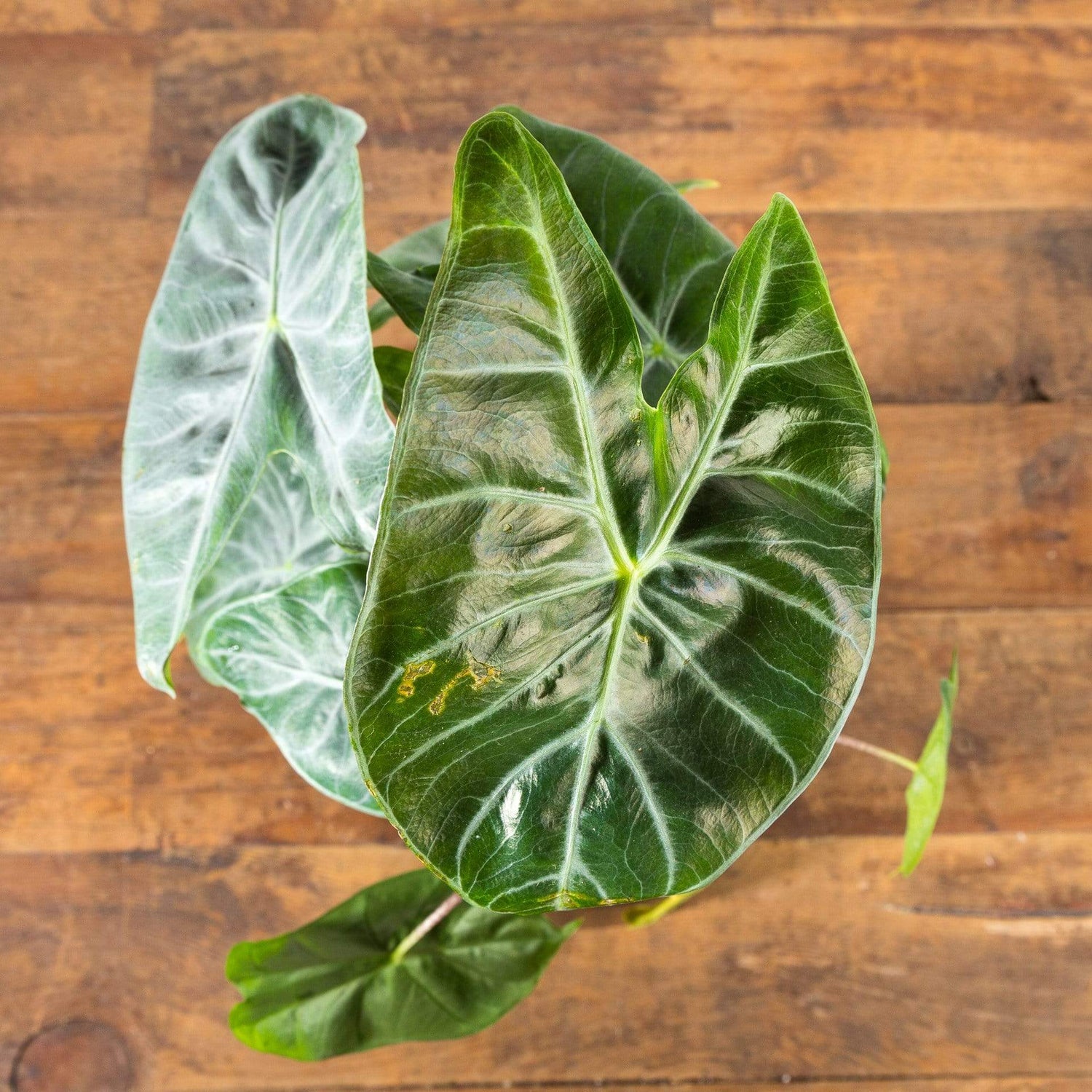
Repotting your Alocasia
Alocasia don’t mind being a little bit cramped in their pots so this plant doesn’t necessarily need to be re-potted once a year on the dot. The best way to check if your plant is ready for a re-pot is to gently slide the root ball out and check the amount of soil surrounding it. If you’re seeing mostly root, it’s time for a re-pot. Other signs you need to repot are visible roots on the surface of the soil or coming out of the drainage.
Pot in a pot two inches larger than the previous pot and use our rainforest floor blend or another well draining potting mix.
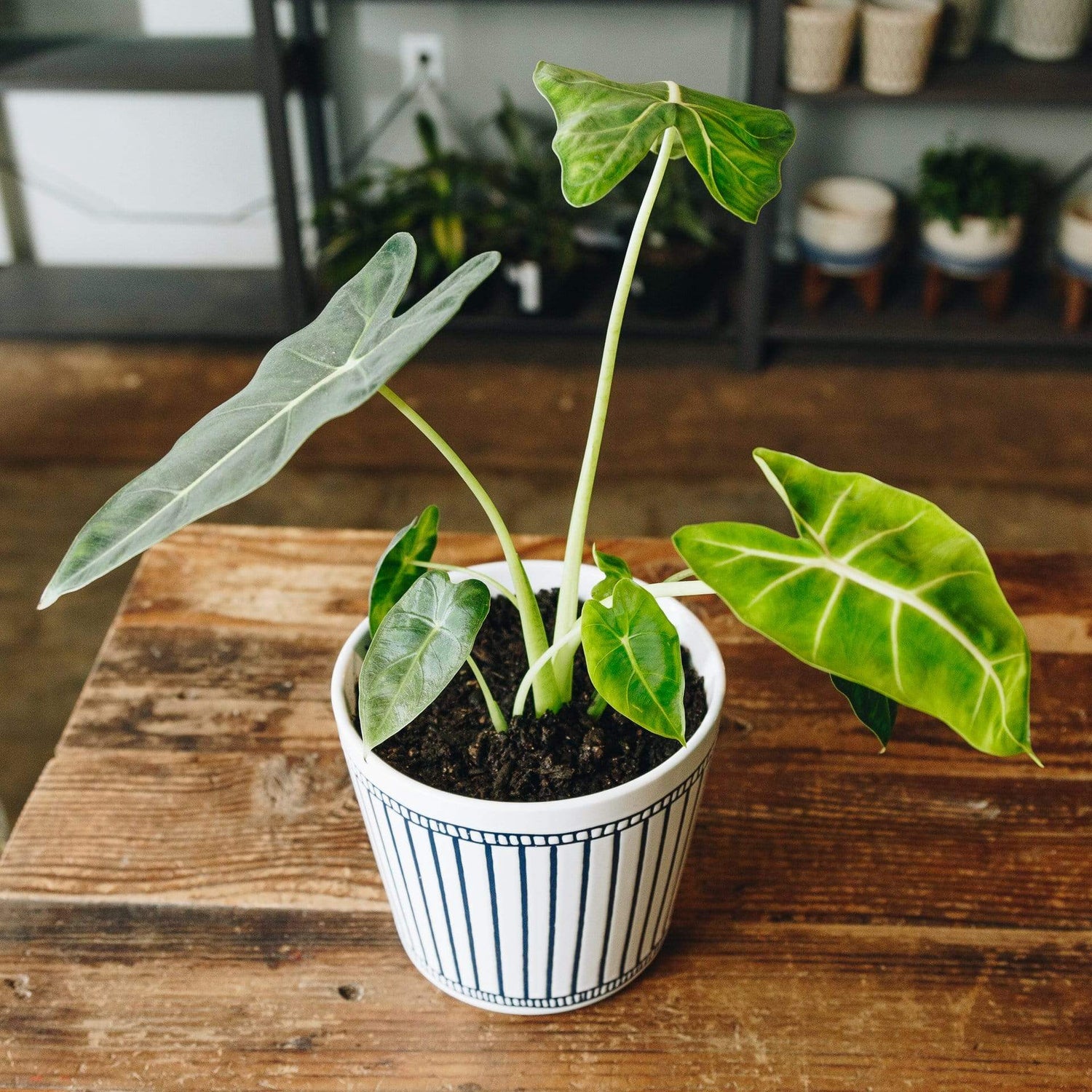
Propagating your Alocasia
Unlike many popular house plants like Monstera or Pothos, Alocasia can not be effectively propagated from leaf cuttings. Instead, to propagate your Alocasia you will need to separate offsets, or tiny replications that your plant makes of itself, from the mother plant.
To do this, remove your Alocasia from it’s pot and shake any soil from the roots. This makes it easier to see where one plant begins and another ends so that you can separate them without causing undue stress.
Once you’ve untangled your offsets from the primary plant (or used a sterilized set of snips if the roots were too tangled to separate) you can either place the plants in water where they can continue to grow their own root system, or you can plant them right into soil.
Whenever you’re propagating it’s important to remember that baby plants (like baby anything) are less resilient than a more established plant. They require more attentive care than a bigger plant in order to thrive.
Enjoy your Alocasia
There is nothing more satisfying than learning how to care for a new houseplant, especially one as breathtaking as Alocasia. By taking the time to learn more about how best to care for your alocasia, you’re taking a meaningful step towards success.
While we’ve covered some of the basics of what you need to know to best care for your Alocasia in this guide, don't be afraid to ask for some help! It can take time and practice learning to distinguish between, say, the signs of under watering or a root stress. We're happy to help you figure out what your plant is trying to tell you while you’re just getting to know it.
If you have specific questions or concerns about how to care for your Alocasia you can reach out to us on Facebook or Instagram, or send us an email.
You're ready to take on an Alocasia!
Here are a few of our favorites in stock!
Blogs you might like to read

